
Entropy
Scope & Guideline
Connecting minds to reshape the future of mathematical physics.
Introduction
Aims and Scopes
- Theoretical and Applied Entropy:
Research exploring the fundamental principles of entropy across disciplines, including thermodynamics, statistical mechanics, and information theory. - Complex Systems and Dynamics:
Studies focusing on the dynamics of complex systems, including biological, ecological, and socio-economic systems, emphasizing how entropy influences system behavior. - Quantum Information and Computation:
Investigations into the role of entropy in quantum systems, including quantum information theory, quantum computing, and the implications of quantum entanglement. - Entropy in Data Science and Machine Learning:
Applications of entropy in data analysis, machine learning, and artificial intelligence, including feature selection, model evaluation, and uncertainty quantification. - Entropy and Network Theory:
Research examining the role of entropy in network structures, dynamics, and information flow, particularly in social networks and biological networks. - Entropy in Environmental and Ecological Studies:
Studies that utilize entropy measures to assess ecological diversity, environmental changes, and resource management.
Trending and Emerging
- Entropy in Machine Learning and AI:
There is a growing interest in utilizing entropy as a measure in machine learning, particularly in feature selection, model evaluation, and improving the robustness of algorithms. - Quantum Computing and Information Theory:
Research exploring the intersection of quantum mechanics and information theory is rapidly expanding, particularly regarding entanglement, quantum states, and their implications for computational efficiency. - Entropy in Health and Biological Systems:
Emerging studies are applying entropy concepts to health sciences, particularly in understanding complex biological processes and the dynamics of health-related data. - Environmental Applications of Entropy:
Research on the application of entropy measures in environmental science and ecology is trending, particularly in assessing biodiversity, climate change impacts, and resource management. - Complex Networks and Entropy:
The exploration of entropy within complex networks, including social networks, biological systems, and financial markets, indicates a significant trend towards understanding the dynamics and structure of these networks.
Declining or Waning
- Classical Thermodynamics:
Research specifically focused on classical thermodynamic principles appears to be waning as the field shifts towards more complex systems and interdisciplinary approaches. - Basic Information Theory:
While information theory remains a core theme, the focus on foundational concepts without interdisciplinary applications has declined in favor of more applied and complex analyses. - Traditional Statistical Mechanics:
The application of traditional statistical mechanics concepts in isolation is less frequent, with a growing preference for integrating these ideas into broader frameworks involving complex systems or quantum mechanics. - Entropy in Simple Systems:
Research that deals with entropy in overly simplified systems or models is becoming less common, as there is a clear trend towards studying more complex, real-world systems.
Similar Journals
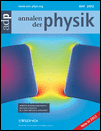
ANNALEN DER PHYSIK
Where Tradition Meets Cutting-Edge ScienceANNALEN DER PHYSIK, a prestigious journal published by WILEY-V C H VERLAG GMBH, stands as a cornerstone of the field of physics and astronomy since its inception in 1799. With an ISSN of 0003-3804 and an E-ISSN of 1521-3889, this journal provides a platform for innovative research and critical discourse across various domains of physics. Annalen der Physik is currently ranked in the Q2 category for general physics and astronomy, occupying rank #76 out of 243 in Scopus, placing it within the 68th percentile. This indicates its significant impact and the quality of research it publishes. Although the journal does not offer Open Access options, its robust historical lineage and ongoing contributions ensure that it continues to be an essential resource for researchers, professionals, and students alike. For those seeking to stay at the forefront of contemporary physics research, ANNALEN DER PHYSIK represents a vital source of knowledge, innovation, and scholarly communication.

COMMUNICATIONS IN MATHEMATICAL PHYSICS
Exploring the Depths of Theoretical InnovationCOMMUNICATIONS IN MATHEMATICAL PHYSICS is a premier journal in the realm of mathematical physics, published by Springer and recognized for its rigorous scholarship and comprehensive coverage of the field since its inception in 1965. With an impressive impact factor reflecting its influential contributions—ranking Q1 in both Mathematical Physics and Statistical and Nonlinear Physics—the journal consistently attracts high-quality submissions. It holds notable standings in Scopus, ranked 11th in Mathematical Physics and 12th in Statistical and Nonlinear Physics, marking it as a critical venue for both emerging and established researchers. The journal is dedicated to the dissemination of groundbreaking research and reviews, thereby fostering dialogue and innovation in a constantly evolving discipline. It provides invaluable access to cutting-edge theoretical advancements, making it an essential resource for professionals and students alike engaged in this dynamic field of study.

BRAZILIAN JOURNAL OF PHYSICS
Championing High-Quality Research in PhysicsBRAZILIAN JOURNAL OF PHYSICS, published by SPRINGER, is a prominent platform dedicated to the dissemination of research within the realm of physics and astronomy. With an ISSN of 0103-9733 and E-ISSN of 1678-4448, this esteemed journal has been contributing to the field since its inception in 1996, and it continues to be pivotal in showcasing innovative studies and breakthroughs. The journal is categorized in the Q4 quartile for the year 2023, reflecting a dedicated focus on advancing knowledge across a variety of disciplines, particularly in general physics and astronomy, where it ranks 126th out of 243 in Scopus rankings. Although it currently does not operate under an open-access model, it remains an invaluable resource for researchers, professionals, and students eager to enhance their understanding of complex physical principles and developments. The journal is committed to promoting high-quality research, bridging gaps in knowledge, and fostering collaboration within the global physics community.
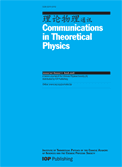
COMMUNICATIONS IN THEORETICAL PHYSICS
Pioneering research for a deeper understanding of physical laws.COMMUNICATIONS IN THEORETICAL PHYSICS is a distinguished journal published by IOP Publishing Ltd, focusing on the broad and evolving field of theoretical physics. With an ISSN of 0253-6102 and an E-ISSN of 1572-9494, this journal provides a platform for the dissemination of innovative research that contributes to the understanding of complex physical concepts. Situated in the United Kingdom, it has established itself as a pivotal resource from 1996 to 2024, achieving a commendable Q2 ranking in the category of Physics and Astronomy (miscellaneous) for 2023. With a Scopus ranking of #18 out of 81 in its category, demonstrating a 78th percentile, this journal plays a crucial role in enhancing scholarly communication among researchers, professionals, and students alike. Although it does not currently offer Open Access options, the journal's comprehensive scope and commitment to high-quality peer-reviewed research underline its significance in the scientific community, making it an essential reading for anyone engaged in theoretical physics.

LETTERS IN MATHEMATICAL PHYSICS
Illuminating the complexities of physical phenomena through mathematics.LETTERS IN MATHEMATICAL PHYSICS, published by Springer, stands as a pivotal platform in the realm of mathematical and statistical physics. With a commitment to disseminating innovative research findings since its inception in 1975, this journal serves both established and emerging scholars by fostering a multidisciplinary dialogue that is vital for the advancement of theoretical concepts and practical applications. The journal boasts an impressive Q1 ranking in both Mathematical Physics and Statistical and Nonlinear Physics categories as of 2023, reflecting its significant impact in these fields, supported by a strong Scopus ranking of 36th and 37th in respective categories. Although it operates on a traditional access model, the journal’s convergence until 2024 ensures a rich repository of literature that aids researchers, professionals, and students in navigating the complexities of mathematical physics. With its strategic location in the Netherlands, LETTERS IN MATHEMATICAL PHYSICS is poised to continue its tradition of excellence, encouraging contributions that deepen the understanding of mathematical frameworks underlying physical phenomena.
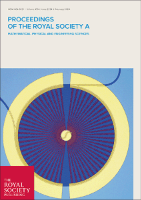
PROCEEDINGS OF THE ROYAL SOCIETY A-MATHEMATICAL PHYSICAL AND ENGINEERING SCIENCES
Advancing the Frontiers of Mathematics, Physics, and Engineering.PROCEEDINGS OF THE ROYAL SOCIETY A-MATHEMATICAL PHYSICAL AND ENGINEERING SCIENCES is a prestigious academic journal published by the Royal Society in the United Kingdom, dedicated to the dissemination of high-quality research in the fields of Mathematics, Engineering, and Physics. With an esteemed impact factor and ranked in the top quartiles (Q1) across various categories, this journal stands out as a leading source of innovative findings and critical discussions within the global scientific community. Researchers benefit from its comprehensive coverage that spans from theoretical explorations to practical applications, and the journal plays a crucial role in advancing knowledge and fostering interdisciplinary collaboration. Although it does not currently offer Open Access options, its influence is underscored by notable Scopus rankings, evidencing its significant contribution to the fields it represents. Located at 6-9 Carlton House Terrace, London SW1Y 5AG, England, the journal continues to be a cornerstone for scholars seeking to publish impactful research and stay informed on the latest advancements in science and engineering.
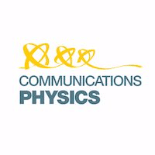
Communications Physics
Catalyzing discoveries in the realm of Physics and Astronomy.Communications Physics is a premier open access journal published by Nature Portfolio, dedicated to disseminating high-quality research in the field of Physics and Astronomy. Since its inception in 2018, the journal has rapidly established itself as a vital platform for innovative scientific communication, boasting an impressive Impact Factor and achieving Q1 status in the 2023 category of Physics and Astronomy (miscellaneous). With a Scopus rank of #31 out of 243, placing it within the 87th percentile, Communications Physics attracts a global audience of researchers, professionals, and students eager to engage with cutting-edge findings. The journal supports open access, ensuring that research is freely available to the public, which enhances its visibility and encourages broader discussions within the scientific community. Located in Berlin, Germany, Communications Physics aims to bridge the gap between various disciplines within physics, fostering interdisciplinary collaboration and inspiring future research endeavors.
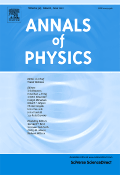
Annals of Physics
Unveiling the mysteries of the cosmos through rigorous research.Annals of Physics is a premier journal published by Academic Press Inc Elsevier Science, specializing in the expansive field of Physics and Astronomy. Since its inception in 1957, this journal has played a pivotal role in disseminating high-quality research and advancements across various sub-disciplines of physics. With a notable impact factor making it rank in the Q1 category for 2023, it stands among the top tier of scholarly publications, specifically sitting at Rank #63 out of 243 in the field, placing it in the 74th percentile according to Scopus metrics. Researchers are encouraged to submit their findings to reach a broad audience without the constraints of Open Access fees, promoting extensive visibility within the academic community. As we look ahead to 2024, Annals of Physics continues to be an essential resource for professionals, students, and academics striving to advance the frontiers of knowledge in physics and astronomy.
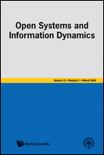
OPEN SYSTEMS & INFORMATION DYNAMICS
Unleashing Knowledge for Collaborative Scientific Discovery.OPEN SYSTEMS & INFORMATION DYNAMICS, published by World Scientific Publishing Co Pte Ltd, is a leading international journal dedicated to advancing research in the interdisciplinary areas of computational mechanics, information systems, and mathematical physics. With its ISSN 1230-1612 and E-ISSN 1793-7191, the journal has established itself as an influential platform for disseminating original research findings, reviews, and methodologies that address complex systems and dynamics. Its current impact factor reflects a solid reputation within the academic community, particularly amongst researchers in the fields of physics, statistics, and computational sciences. The journal's scope encompasses a diverse array of subjects, earning a Q2 classification in Computational Mechanics and Q3 in multiple other categories, including Fluid Flow and Transfer Processes and Information Systems. By providing open access to a wealth of knowledge, OPEN SYSTEMS & INFORMATION DYNAMICS is committed to fostering collaboration and innovation for students, researchers, and industry professionals alike, positioning itself as a cornerstone of scientific exploration and discovery in Singapore and beyond.

JOURNAL OF STATISTICAL PHYSICS
Advancing the frontiers of Statistical and Nonlinear Physics.The Journal of Statistical Physics, published by Springer, is a premier academic journal that has made significant contributions to the fields of Mathematical Physics and Statistical and Nonlinear Physics since its inception in 1969. With a strong reputation reflected in its 2023 rankings—placing it in Q2 of both categories and achieving an impressive Scopus rank of #22 in Mathematical Physics and #25 in Statistical and Nonlinear Physics—this journal serves as a vital platform for researchers, professionals, and students. The impact factor of the journal underscores its importance in disseminating cutting-edge research and theoretical developments. Authors are invited to submit original research articles that explore the intricate complexities of statistical mechanics, quantum physics, and related disciplines, fostering deep insights and academic discourse. Although the journal does not currently offer open access, its robust editorial standards and commitment to advancing knowledge make it an essential resource for those engaged in these dynamic fields.